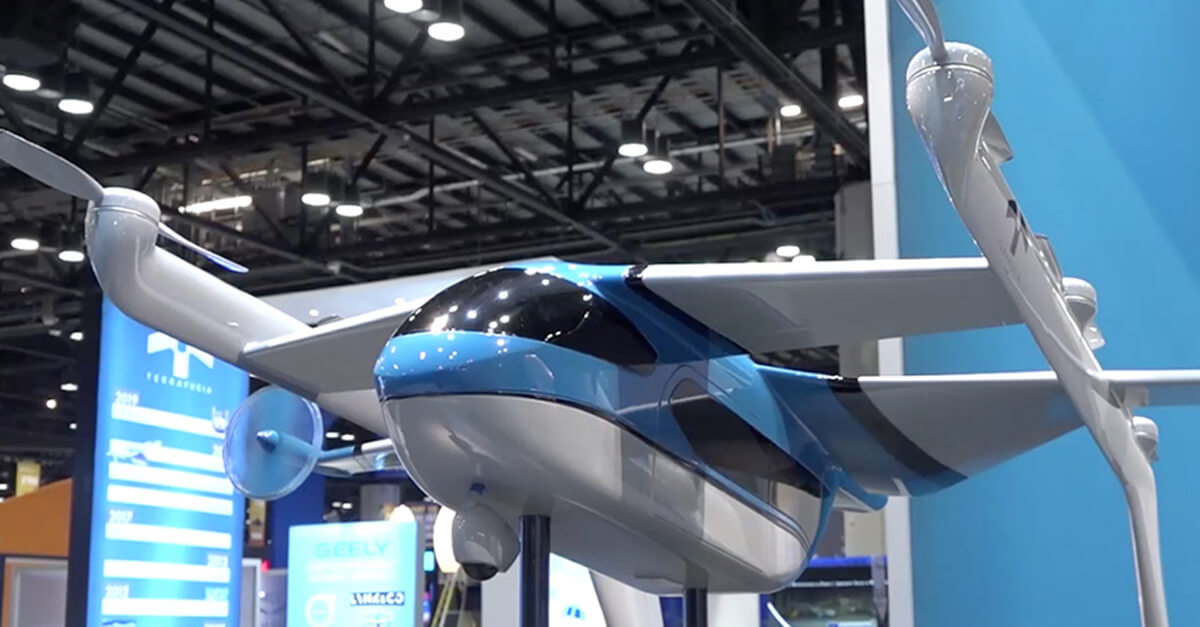
Feb. 25, 2020
There are many terms associated with the next generation of aerial transportation – including electric vertical takeoff and landing (eVTOL), urban air mobility (UAM) and even “flying cars” – but they all share the singular theme of a revolutionary paradigm shift in how people and cargo move across cities, communities and beyond.
While much work remains before UAM vehicles are a common presence in the nation’s skies, it’s clear this market has an energy and momentum.
Today, a diverse array of start-up companies are working to develop UAM vehicles, and they’re joined by industry stalwarts such as Airbus, Boeing, Embraer and Bell. These efforts are supported by dedicated engineering teams and significant investment capital, and global regulatory agencies – including the European Union Aviation Safety Agency (EASA) and the FAA – are working to develop the necessary regulatory and technical infrastructures to support UAM operations.
UAM has also attracted significant interest from established industry stakeholders. For example, jetAVIVA founder Cyrus Sigari said he first became interested in the business case for UAM nearly four years ago. “I found it very interesting that Uber was looking so closely at the crossover between electrification and autonomy,” he said. “That told me there was already enough of a tailwind for others to be hopping onboard this effort.”
Sigari also saw “a similar energy” in the emerging UAM market as what took place in the early 2000s with the advent of owner-flown light jets. “In both cases, we’re speaking of a new category of machine that also enables a new type of consumer,” he said.
Jaunt Air Mobility CEO Kaydon Stanzione saw the potential for UAM when examining urban gridlock and the advent of ride-sharing platforms. “That compelled me to look more closely at how people moved,” he said.
He also looked closely at helicopter air ambulance operations in urban environments. “There’s a lot of vertical flight already taking place over cities, and these aircraft are operating in the same crowded airspace used by airliners,” Stanzione continued. “They can also land on streets, in urban areas and on top of buildings, and receive special dispensation to operate in Class B airspace. Now, it’s only a matter of expanding the scope.”
While Sigari is bullish on the future of aerial mobility, he also acknowledged the many challenges that will need to be resolved before UAM enters the mainstream.
“Noise is the first challenge factor, and manufacturers are spending a lot of time in this area,” Sigari said. “We also need a new approach to the ATC system to allow these flying machines to safely interact with each other in the airspace system; today’s ATC that works for traditionally piloted aircraft won’t suffice for robust UAM operations in close proximity.”
Stanzione noted that public perception is another hurdle toward widespread acceptance of UAM. “If I’m a homeowner, do I want to see thousands of these vehicles flying over my home or business?” he said. “I’m going to worry about these things falling out of the sky, and that’s an understandable concern we’re going to need to deal with.”
Funding remains another challenge to eVTOL development and adoption, although Sigari noted a difference in investor attitudes about UAM compared to past aviation efforts.
“Investors aren’t going to see an immediate return on their investments in UAM, as it will take some time before consumers interact with these products,” he said.
Nevertheless, none of these hurdles appear insurmountable.
“Aerial mobility is inevitable; it’s going to happen, and it’s not a matter of ‘if’ but ‘when,'” Sigari said . “It’s a foregone conclusion as far as I’m concerned, and I fully expect that within my lifetime we’ll see a pretty significant shift in how humanity interacts with the third dimension.”
UAM, and it’s future in business aviation, will be on display at NBAA San Jose Regional Forum on March 5.
A panel of experts from industry leading companies including, Uber Elevate, Elroy Air and Quantum XYZ will discuss UAM, the market opportunities that exist and the impacts it will bring. In addition to the panel, witness first-hand an aerial cargo delivery system developed by Elroy Air on the aircraft display.
In addition to the panel, witness first-hand an aerial cargo delivery system developed by Elroy Air on the aircraft display.


 International Business Aviation Council Ltd.
International Business Aviation Council Ltd.